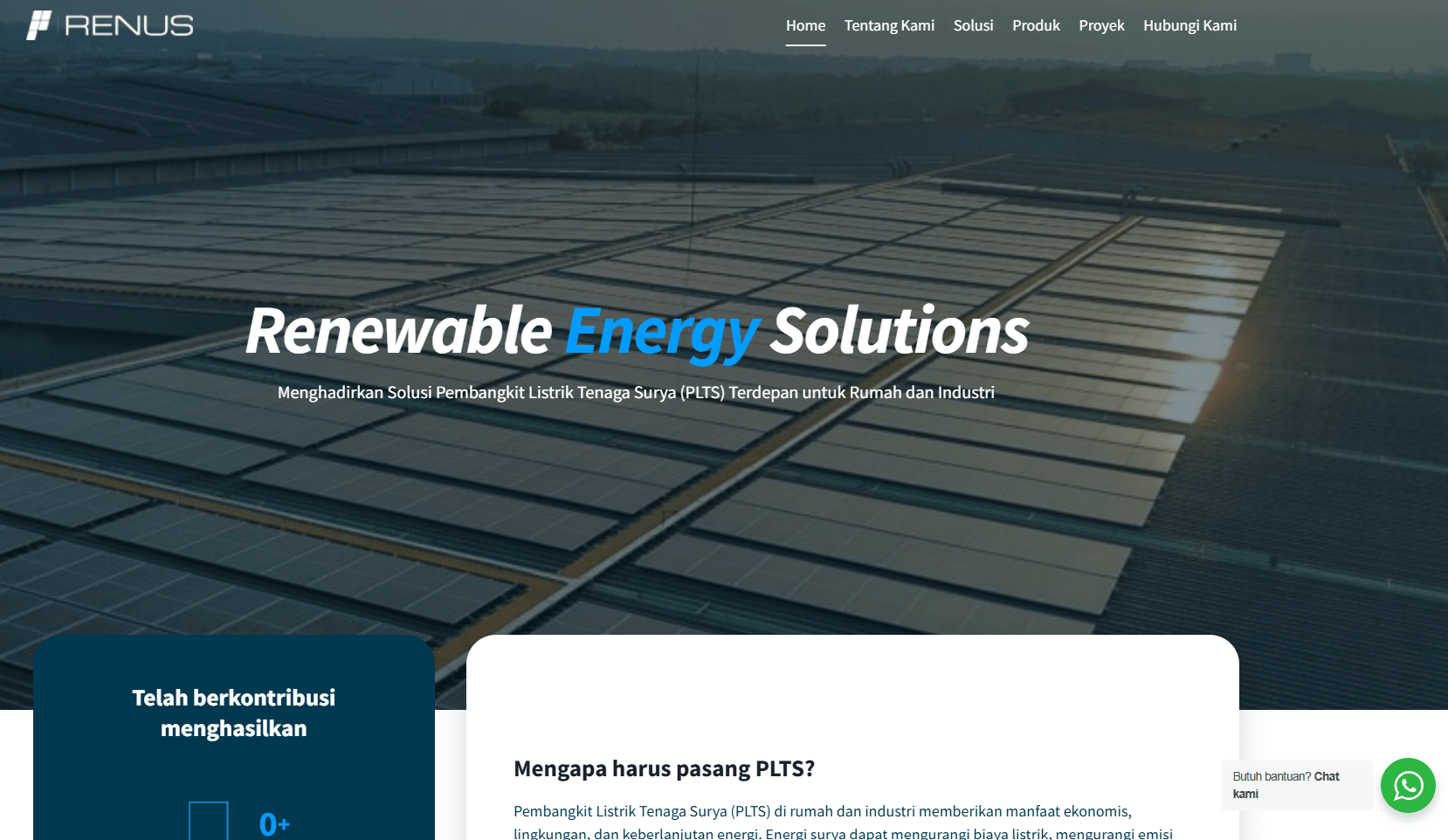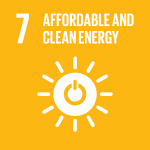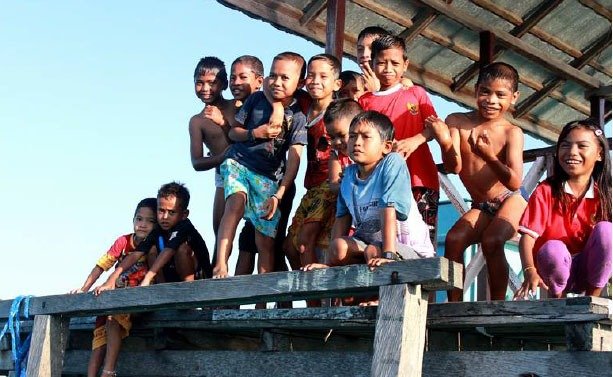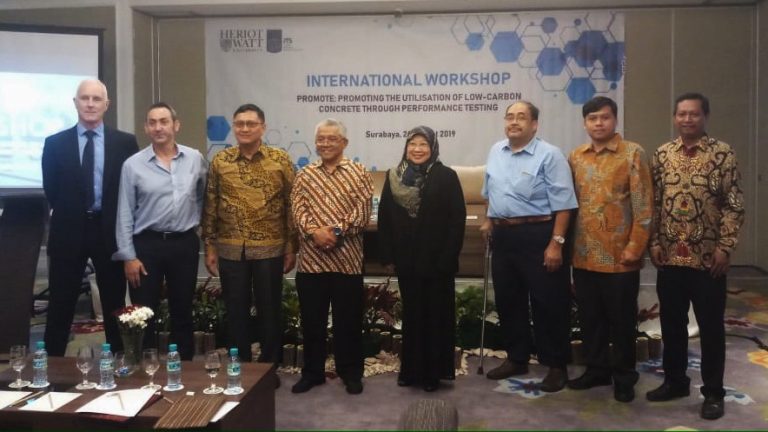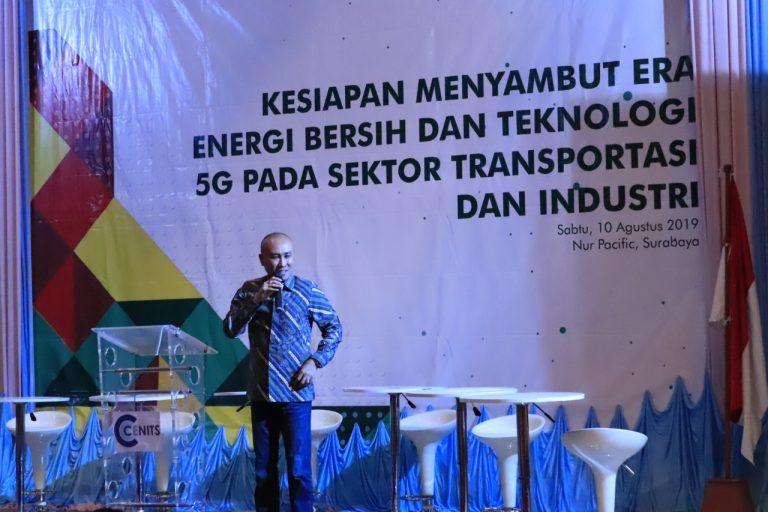“After water and food, energy is one of the key enablers of human life. Energy is central to nearly every major challenge and opportunity the world faces today and access to energy for all is essential. But energy needs to be available and affordable to all to allow future development, and it needs to be clean in order to ensure that the development can be sustainable.”
(THE Impact Rankings)
SDG 7: AFFORDABLE AND CLEAN ENERGY
University measures towards affordable and clean energy
ITS Embraces Energy-efficient Renovation and Building
ITS with its “Advancing Humanity” motto is committed to contributing to achieving SDGs by becoming a sustainable and environmentally friendly campus. The commitment is shown by establishing the Rector’s Circular Letter No. 9665/IT2/T/TU.00.08/V/2024 in achieving the Sustainable Development Goals. The goal of the Rector’s Circular Letter is to transform ITS into a campus that aligns with sustainable and eco-friendly principles, ultimately contributing to the realization of SDGs.
The Infrastructure chapter emphasizes building, managing, and renovating structures in accordance with green building standards, utilizing energy-efficient and environmentally friendly materials explained at point 2.
- Support innovation in education, research, and community service to foster sustainable infrastructure development.
- Build, manage, and renovate buildings according to green building standards using energy-efficient and environmentally friendly materials.
- Utilize renewable energy sources, such as solar and wind power, across campus activities.
- Ensure sustainable conservation, revitalization, and utilization of terrestrial ecosystems on campus, particularly forested, hilly, and dry land areas to preserve biodiversity, restore natural habitats, and support surrounding environmental sustainability.
- Maintain the ideal proportion of green open spaces relative to built-up areas.
- Create a comfortable environment by planting trees and organizing green spaces on campus.
Additionally, the Energy Efficiency and Conservation chapter mandates the application of energy efficiency and conservation principles in all new buildings and renovations points 2 and 9 provides policy for energy-efficient renovation and building. Here are the points in the regulation:
- Encourage technology utilization to improve energy efficiency.
- Implement energy efficiency programs by choosing and using energy-efficient and eco-friendly electrical equipment.
- Facilitate the transition to renewable energy for campus use.
- Ensure lights are used only in rooms lacking adequate natural light.
- Strategically place lights without compromising illumination function.
- Limit air conditioning use and maximize ventilation.
- Set air conditioners to a moderate 24-25°C.
- Reserve elevator use for essential needs, prioritize during peak hours and turn off elevators after office hours.
- Apply energy efficiency and conservation principles in all new buildings or renovations.
- Encourage a low-carbon lifestyle among the academic community.
Point (9) explicitly explains that ITS applies the principles of energy efficiency and conservation to all new buildings or renovations with some supported by point (2) that implements energy efficiency programs by selecting and using energy-efficient and environmentally friendly electrical equipment as well as several regulations from points (1 – 10) that ensure all renovations or new construction follow energy efficiency standards to support sustainability in campus environments.
Full policy:
Rector Circular Letter to ITS’ Commitment as a Green and Sustainable Campus
Greener Buildings for a Greener Future: ITS Advances Campus Sustainability Through Building Quality Improvement
Upgrading existing buildings to higher energy efficiency is the way to address the pressing issues of climate change and sustainable resource utilization. Improved energy efficiency in buildings significantly reduces energy consumption, leading to a decrease in greenhouse gas emissions and a more responsible use of energy resources. This not only helps overcome environmental challenges but also leads to substantial cost savings for the university. Understand the situation, ITS through Rector’s Circular Letter No. 9665/IT2/T/TU.00.08/V/2024 Chapter Energy Efficiency and Conservation explained at points 1-10 endeavor to upgrade buildings to higher energy efficiency continuously. Here are the points in the regulation:
- Encourage technology utilization to improve energy efficiency.
- Implement energy efficiency programs by choosing and using energy-efficient and eco-friendly electrical equipment.
- Facilitate the transition to renewable energy for campus use.
- Ensure lights are used only in rooms lacking adequate natural light.
- Strategically place lights without compromising illumination function.
- Limit air conditioning use and maximize ventilation.
- Set air conditioners to a moderate 24-25°C.
- Reserve elevator use for essential needs, prioritize during peak hours and turn off elevators after office hours.
- Apply energy efficiency and conservation principles in all new buildings or renovations.
- Encourage a low-carbon lifestyle among the academic community.
ITS implements Smart Building configuration with a Building Management System (BMS) in 40 buildings. This effort aims to provide effective control over indoor lighting and cooling. The area of buildings that implements this system reaches 246,333.20 m2 or 67.94% of the total area and ITS committed to increase the usage of BMS until 100% of all buildings to support sustainability especially energy efficiency buildings in campus. Some of those buildings are Rectorate Building, Research Center Building, Library Building, Graha 10 Nopember Building, Tower 2 ITS Building, Manarul Ilmi Mosque, etc. Energy management systems with the usage of AC, refrigerators, dispensers, and laptop inverters have been implemented in several departments and units. In maintaining campus safety and comfort, solar panel-based CCTV has been installed along the way in the region of ITS.
Another examples are using solar power plants to support environmentally friendly energy in several buildings that can generate in total 332,465 kWh/ year, using vertical building gardens to make the environment cooler which results in less use of inverter air conditioners, optimizing rooms so that they get full lighting from the sun to minimize the use of lights and using LED lights to support energy efficiency, using electrical equipment with motion sensor and time control technology for less electricity usage, implement natural and mechanical ventilation systems in every study room and smart rooms to ensure effective and comfortable air circulation and temperature control with innovative technology to address the challenges of green building configuration energy needs.


Furthermore, as a follow-up to continue ITS’ commitment to renewable energy Institut Teknologi Sepuluh Nopember (ITS) with Nanyang Technological University (NTU) Singapore plan to build Renewable Energy Integration Demonstrator of Indonesia (REIDI), the project under Institute of Research for Sustainability and Innovation (INSPIRASI). This collaboration will be ongoing for five years to develop living lab renewable energy and various research with students and researchers. ITS gets the privilege of being the first institute that owns REIDI in Indonesia.
REIDI will present innovations by developing electricity generators with renewable energy. These innovations are solar panels with 500 kV capacity, biomass with 50 kV capacity, and hydrogen with 10 kV capacity. The electricity will be optimized by ITS for a variety of purposes, either channeled to the electricity grid or stored as a battery supply.
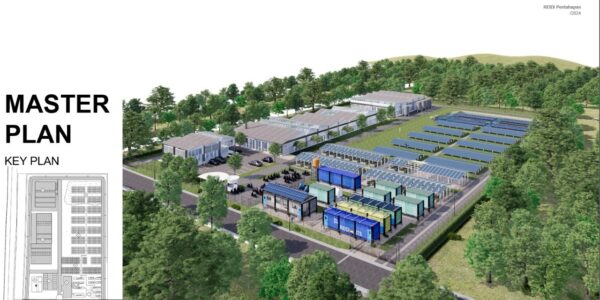
ITS Tackles Climate Change with Comprehensive Carbon Emission Reduction and Sustainability Programs
Reducing carbon emissions is crucial to addressing the global challenge of climate change, which poses significant risks to ecosystems, economies, and human health. Excessive carbon dioxide and other greenhouse gasses released into the atmosphere primarily from fossil fuel use, deforestation, and industrial processes are driving global warming and extreme weather events. To mitigate these impacts, it is essential to transition to cleaner energy sources, improve energy efficiency, and adopt sustainable practices across industries. This process involves policy changes, technological advancements, and individual behavioral shifts to lower emissions and protect the planet for future generations. ITS through Rector’s Circular Letter No. 9665/IT2/T/TU.00.08/V/2024 Chapter Energy Efficiency and Conservation explained at points 1 – 10 endeavor to upgrade buildings to higher energy efficiency continuously that manage processes for carbon management and reducing carbon dioxide emission. Here are the points in the regulation:
- Encourage technology utilization to improve energy efficiency.
- Implement energy efficiency programs by choosing and using energy-efficient and eco-friendly electrical equipment.
- Facilitate the transition to renewable energy for campus use.
- Ensure lights are used only in rooms lacking adequate natural light.
- Strategically place lights without compromising illumination function.
- Limit air conditioning use and maximize ventilation.
- Set air conditioners to a moderate 24-25°C.
- Reserve elevator use for essential needs, prioritize during peak hours and turn off elevators after office hours.
- Apply energy efficiency and conservation principles in all new buildings or renovations.
- Encourage a low-carbon lifestyle among the academic community.
The program that ITS has in reducing Greenhouse Gas (GHG) emission consists of 3 scopes. Scope 1 accommodates Stationary Combustion, Mobile Combustion, Process Emissions, and Fugitive Emissions. Scope 2 is about Purchased Electricity. While Scope 3 talks about Waste, Purchased Waste, and Commuting. All of those scopes support ITS to reducing Greenhouse Gas emission in the campus area.
Scope 1
- Stationary Combustion
ITS strives to provide environmentally friendly electronic equipment by purchasing energy-efficient equipment that supports academic and office activities. In the procurements, ITS pays attention to the Minister of Environment and Forestry Regulation Number 5 of 2019 concerning Procedures for Applying Environmentally Friendly Labels for Procurement of Environmentally Friendly Goods and Services. Procurement of goods by e-catalogue, which provides energy-efficient equipment used such as inverter air conditioners, energy-saving labeled inverter laptops, solar panels, and automatic switches. For the procurement of lights, they are provided by Procurement of Goods and Services Work Unit (UKBPJ), which provides only LED lights that more efficient rather than the other.
2. Mobile Combustion
To reduce emissions on campus, ITS operates ecologically friendly vehicles, including bicycles, electric motorbikes, electric buses built by ITS and I-Car Smart autonomous cars. All these vehicles are free and operate everyday to support mobilization of peoples especially inside of campus. Successfully supporting the G20 Bali 2022 event with electric buses, ITS continues to produce electric buses, one of which is used by the Surabaya City Government for public transportation.

3. Process Emissions
ITS has several innovations that support the program to reduce greenhouse gas emissions directly from physical and chemical processes, such as the production of biodiesel, biomass as a renewable energy source, chemical reaction energy cars called Chem E-Cars, and the use of bioethanol and photovoltaics in environmentally friendly hybrid vehicles.
4. Fugitive Emissions
ITS promotes the use of air conditioners (AC) and freezers that do not use chlorofluorocarbons (CFCs) and are classified as energy efficient, making them ecologically friendly. In addition, ITS minimizes the use of air conditioners by averaging the temperature at 24-25 degrees Celsius.
Scope 2
- Electricity
ITS uses electrical automation procedures, such as automatic switches that will turn off automatically using setting time to save energy and assist the reduction of greenhouse gas emissions. Most of the switches are used to manage air conditioners and lights
Scope 3
- Waste
In order to decrease the quantity of waste created, ITS organizes campaigns and socialization events for all lecturers, employees, and students to reduce waste at the source and promote recycling and reuse. Efforts to decrease waste using the 3R strategy (Reuse, decrease, Recycle) must be implemented in each unit/department and serve as the unit’s performance indicator. The ITS Integrated Waste Savings (TaSTe) waste bank was established to absorb waste with a resale value. The ITS campus environment processes organic waste through composting. In addition, ITS works with TPS 3R Arief Rahman Hakim to turn organic waste into compost.

2. Purchased Waste
ITS has a policy through the Circular Letter of ITS Rector regarding the necessity to limit or reduce the use of plastic and paper in the campus area. In activities on campus, the provision of plates and cups as a substitute for plastic drinking bottles and the prohibition of using styrofoam in meetings and meetings are carried out. Socialization of the use of tumblers and non-disposable bags is carried out on campus.
3. Commuting
In order to limit motorized vehicles that can freely enter ITS without any interest, a vehicle inspection system is created that enters and exits the campus equipped with special signs for security. ITS has implemented automatic gates or vehicle barriers that are accessible only to registered vehicles and authorized personnel. This effort contributes to reducing vehicle density.

The points aim to reduce carbon emission reduction in institutions in general. ITS collaborated with PT Panasonic Gobel Life Solutions Manufacturing in installing and developing light-emitting diode (LED) as public street lighting with solar panel in the campus area. This is implemented by ITS and Panasonic as an effort to save energy to reduce power usage and reduce electricity costs. This LED is completed with a smart system. It is a system to directly monitor the light condition. This feature is highly needed to provide the actual data on the energy usage of the light. This LED has been used in several locations such as the Rectorate Building, library, park, Research Center, toilets, etc.
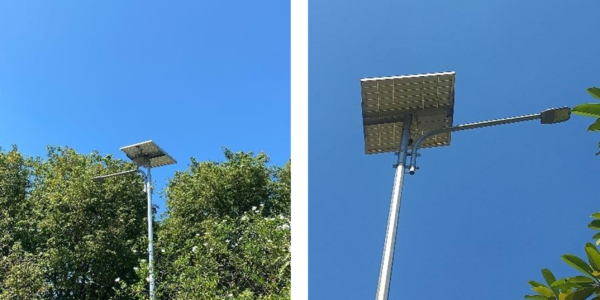
ITS’ Strategic Plan and Programs to Reduce Energy Consumption
Having a plan to reduce energy consumption is crucial for both environmental and economic reasons. By strategically managing energy use, businesses and individuals can lower their carbon footprint, contributing to the fight against climate change and minimizing harmful emissions. A well-structured energy reduction plan also leads to significant cost savings by reducing electricity bills and decreasing reliance on non-renewable energy sources. Moreover, energy efficiency improves the overall performance of systems and equipment, prolonging their lifespan and reducing the need for maintenance. Finally, adopting such plans demonstrates social responsibility and aligns with global sustainability goals, enhancing the reputation of organizations that prioritize energy conservation. ITS through Rector’s Circular Letter No. 9665/IT2/T/TU.00.08/V/2024 Chapter Energy Efficiency and Conservation explained at points 1-10 endeavor to upgrade buildings to higher energy efficiency continuously that manage processes for carbon management and reducing carbon dioxide emission. Here are the points in the regulation:
- Encourage technology utilization to improve energy efficiency.
- Implement energy efficiency programs by choosing and using energy-efficient and eco-friendly electrical equipment.
- Facilitate the transition to renewable energy for campus use.
- Ensure lights are used only in rooms lacking adequate natural light.
- Strategically place lights without compromising illumination function.
- Limit air conditioning use and maximize ventilation.
- Set air conditioners to a moderate 24-25°C.
- Reserve elevator use for essential needs, prioritize during peak hours and turn off elevators after office hours.
- Apply energy efficiency and conservation principles in all new buildings or renovations.
- Encourage a low-carbon lifestyle among the academic community.
The points aim to reduce electricity usage in institutions in general. ITS collaborated with PT Panasonic Gobel Life Solutions Manufacturing in installing and developing light-emitting diode (LED) as public street lighting with solar panel in the campus area. This is implemented by ITS and Panasonic as an effort to save energy to reduce power usage and reduce electricity costs. This LED is completed with a smart system. It is a system to directly monitor the light condition. This feature is highly needed to provide the actual data on the energy usage of the light. This LED has been used in several locations such as the Rectorate Building, library, park, Research Center, toilets, etc.

The use of timers for air conditioner (AC) settings in several places such as the Research Center Building, ITS Dormitory Building, Department of Actuarial Science, Department of Civil Engineering, Department of Material and Metallurgical Engineering, etc. The use of energy-efficient equipment at ITS to replace conventional equipment has reached 65%. The current utilization of lamps at ITS is 10.000 units, with the usage of LED bulbs by 94%. Procurement of Goods and Services Work Unit (UKPBJ) of ITS procures environmentally friendly electronic goods from the E-catalogue.

Besides lights and AC, ITS also implements Smart Building configuration with a Building Management System (BMS) in 40 buildings. This effort aims to provide effective control over indoor lighting and cooling. The area of buildings that implements this system reaches 246,333.20 m2 or 67.94% of the total area. Some of those buildings are Rectorate Building, Research Center Building, Library Building, Graha 10 Nopember Building, Tower 2 ITS Building, Manarul Ilmi Mosque, etc. Energy management systems with the usage of AC, refrigerators, dispensers, and laptop inverters have been implemented in several departments and units. In maintaining campus safety and comfort, solar panel-based CCTV has been installed along the way in the region of ITS.
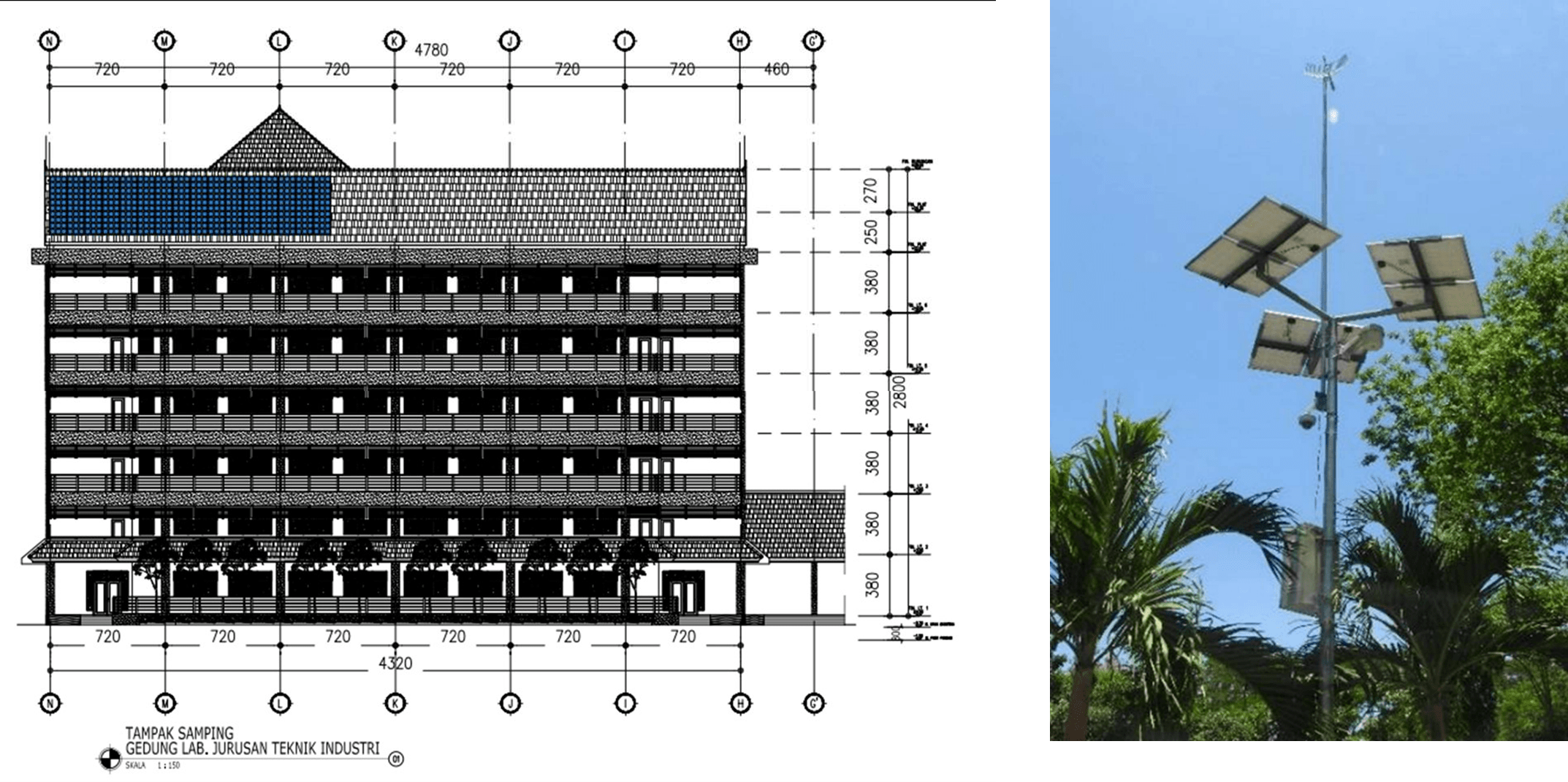
In addition, ITS also implements the Green Building concept in several buildings. Manarul Ilmi Mosque, Research Center ITS, Department of Architecture, library, dormitory study room, and other buildings use natural lighting. Those buildings are designed with an open concept so that light can enter and reduce electricity usage.
Furthermore, as a follow-up to continue ITS’ commitment to reducing energy consumption from non-renewable energy and replacing it with renewable energy, Institut Teknologi Sepuluh Nopember (ITS) with Nanyang Technological University (NTU) Singapore plans to build Renewable Energy Integration Demonstrator of Indonesia (REIDI), the project under Institute of Research for Sustainability and Innovation (INSPIRASI). This collaboration will be ongoing for five years to develop living lab renewable energy and various research with students and researchers. ITS gets the privilege of being the first institute that owns REIDI in Indonesia.
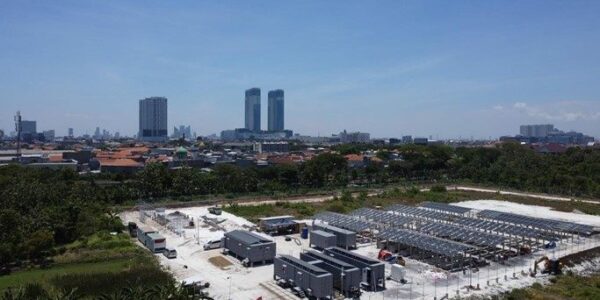
REIDI will present innovations by developing electricity generators with renewable energy. These innovations are solar panels with 500 kV capacity, biomass with 50 kV capacity, and hydrogen with 10 kV capacity. The electricity will be optimized by ITS for a variety of purposes, either channeled to the electricity grid or stored as a battery supply.
ITS Identifies Energy Wastage to Maintain and Improve Greener, Cost-Effective, and Sustainable Campus
Identifying energy wastage is crucial for improving efficiency, reducing costs, and minimizing environmental impact. Energy wastage occurs when resources are used inefficiently, leading to higher operational costs and unnecessary consumption of energy, often from fossil fuels. By pinpointing where energy is wasted, individuals and organizations can implement targeted measures to reduce consumption, cut costs, and lower their carbon footprint. This not only contributes to more sustainable energy use but also extends the lifespan of equipment and systems by optimizing their operation. Additionally, reducing energy wastage helps conserve natural resources, decreases harmful emissions, and supports global efforts to combat climate change. Identifying and addressing these inefficiencies is a key step in creating more responsible, cost-effective, and environmentally friendly energy practices.
ITS through Rector’s Circular Letter No. 9665/IT2/T/TU.00.08/V/2024 Energy Efficiency and Conservation explained at points 1-10 endeavors to improve energy efficiency. Here are the points in the regulation:
- Encourage technology utilization to improve energy efficiency.
- Implement energy efficiency programs by choosing and using energy-efficient and eco-friendly electrical equipment.
- Facilitate the transition to renewable energy for campus use.
- Ensure lights are used only in rooms lacking adequate natural light.
- Strategically place lights without compromising illumination function.
- Limit air conditioning use and maximize ventilation.
- Set air conditioners to a moderate 24-25°C.
- Reserve elevator use for essential needs, prioritize during peak hours and turn off elevators after office hours.
- Apply energy efficiency and conservation principles in all new buildings or renovations.
- Encourage a low-carbon lifestyle among the academic community.
ITS conducts energy consumption assessments to identify areas with the highest levels of energy waste, organized by cluster. Here is the usage of electricity consumption:

In addition, ITS calculate total carbon footprint on campus from several sources such as electricity, transportation from buses, cars, motorcycles. This monitoring will help ITS to easy identify of wastage energy. In total ITS produce 11,869.77 ton metric from those sources. This result may affect future plan and action to reduce the carbon footprint and to measure the energy wastage. Here are some details:
- CO2 (electricity) : 10,807.05 metric ton
- CO2 (buses) : 1.92 metric ton
- CO2 (cars) : 362.00 metric ton
- CO2 (motorcycles) : 698.40 metric ton
To reduce energy dependence from the National Electricity Company (PLN), most of which still comes from non-renewable energy, ITS seeks to produce its own through renewable energy with a total of 333,905 kWh/ year and monitors the use of electricity from renewable energy to optimize usage and to check if there is any wastage energy. Here are the details:
- Solar Power = 332,465 kWh/ year
- Biodiesel = 1,200 kWh/ year
- Clean Biomass = 240 kWh/ year
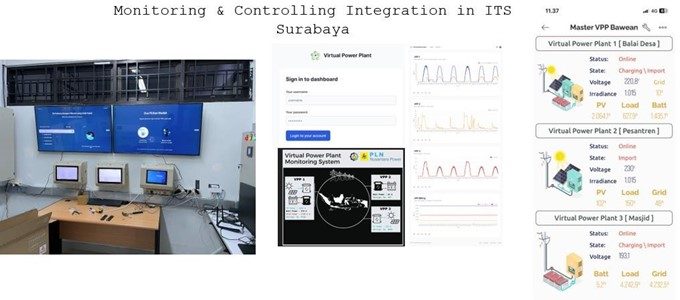
ITS Leads with Divestment Policy Against Carbon-Intensive Industries for a Sustainable Future
Having a policy on divesting investments from carbon-intensive energy industries, such as coal and oil, is essential for promoting environmental sustainability and aligning with global climate goals. As the world transitions to cleaner energy sources, continuing to invest in fossil fuels exacerbates climate change and prolongs dependence on harmful practices. Divestment policies not only send a strong signal that organizations are committed to reducing their environmental impact, but they also protect investors from potential financial risks associated with stranded assets as governments increasingly regulate carbon emissions. Realizing this important matter, ITS has a policy with the Rector’s Circular Letter No. 9699/IT2/B/TU.00.02/V/2024 Chapter Economy explained at No. 1 points 1, 2, 3, and 4 encourage collaboration with companies that support sustainability. Here are the points in the regulation:
- Encourage investments involving companies that prioritize renewable energy.
- Encourage investments involving building management companies that prioritize the principle of ecosystem stability.
- Encourage awareness among investors to engage in activities that prioritize environmentally friendly principles.
- Evaluate its investment portfolio and ensure that it is aligned with the university’s sustainability commitments.
This regulation has already been implemented by ITS, one the example is Procurement of Goods and Services Work Unit (UKPBJ) only provides environmentally friendly electronic goods such as LED lamps ITS has collaborated with PT Panasonic Gobel Life Solutions Manufacturing to produce light-emitting diode (LED) with smart systems that can monitor the light condition surrounding to reduce power usage and reduce electricity costs.
Energy and the community
Empowering Communities: ITS Drives Clean Energy and Efficiency Initiatives for Sustainable Development
Programs that educate local communities about the importance of energy efficiency and clean energy are essential for fostering sustainable development and addressing environmental challenges. By raising awareness and providing knowledge, these programs empower individuals to adopt energy-saving practices and reduce their carbon footprints, leading to collective environmental benefits. Educating communities on clean energy solutions encourages the transition to renewable energy sources, which helps mitigate climate change, improve air quality, and reduce reliance on fossil fuels. Furthermore, such programs promote energy independence and cost savings, particularly for low-income households, by teaching practical steps to lower energy consumption. Engaging local communities in energy efficiency initiatives also fosters a culture of environmental stewardship, ensuring long-term commitment to sustainability and a greener future for all.
ITS has several community service activities to improve and assist in the community, especially community outreach for energy efficiency. These activities are always linked to the SDGs topic to be able to focus more on activities and output. In SDG 7 with the theme Affordable And Clean Energy ITS carries out several program activities for the community. The example ITS helped create an IoT-based solar panel for Mojosari village which was experiencing irrigation problems in the village’s agriculture. ITS helped transition the energy used to pump water from diesel to solar power plants. This is very beneficial for local farmers such as reducing the cost needed to irrigate the land, monitoring the irrigation system and the water discharge used, and supporting the reduction of the use of environmentally unfriendly fuels. The ITS team also provides training for local communities to maintain the solar power plant and irrigation system so they can improve the agriculture that they have. In addition, what happens in Sukorejo village is the need for lights to illuminate the dragon fruit farm at night. Therefore, ITS helped by creating a solar power plant whose power is stored in batteries, and at night the electricity that has been stored can be used to illuminate and accelerate fertilization. This is very beneficial for farmers because it reduces the need for very expensive electricity and is certainly more environmentally friendly.
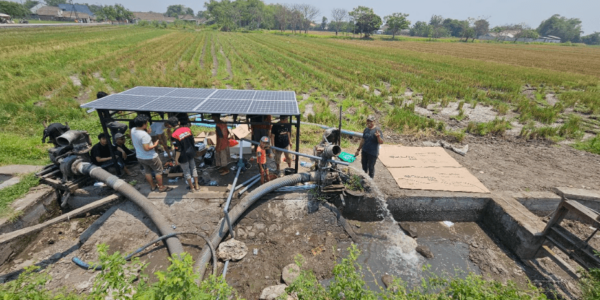
Some serious problems are people in Winong and Ngendut villages who experience drought, lack of clean water, and expensive and limited access to electricity. ITS helped create a solar power plant to overcome these problems so that it could help the community meet its needs. Through the solar power plant, the electricity can help to pump water for free, quickly and can meet the electricity needs of the village. In addition to building a solar power plant in the village, ITS also provides counseling and training to the village community to maintain the solar power plant so that it can continue to be used. In addition to using solar power plants, ITS also helps the Pandanrejo village community by using Micro Hydro Power Plants as a source of electricity due to the limited electricity available and clean energy. Using the smart greenhouse method, the Micro Hydro Power Plant can meet the needs of clean water, street lighting, irrigation of agricultural land, etc.
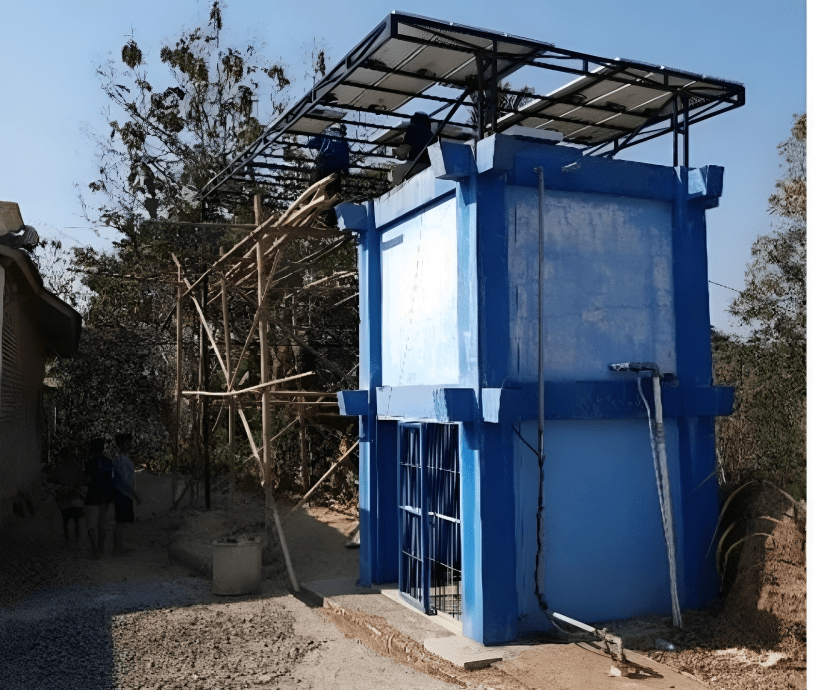
Full article:
ITS Community Services Team Innovates Solar and IoT-Based Water Pump for Irrigation
Utilizing Solar Panels, ITS Community Services Helps Irrigate Residents
Building an Microhydro Power Plant, ITS Provides Power for Strawberry Farms
ITS Improves Dragon Fruit Farm Productivity with Renewable Energy
ITS is Committed to 100% Renewable Energy Future Through Comprehensive Sustainability Pledge
Having a renewable energy pledge is vital for demonstrating commitment to a sustainable and environmentally responsible future. By committing to renewable energy, organizations, governments, and individuals take proactive steps to reduce reliance on fossil fuels, which are major contributors to climate change and environmental degradation. A renewable energy pledge helps accelerate the transition to cleaner energy sources like solar, wind, and hydropower, reducing greenhouse gas emissions and limiting the harmful impacts of global warming. It also promotes energy security and economic resilience by diversifying energy sources and creating new jobs in the green energy sector. ITS is committed to reduce carbon emission by several points explained:
- ITS aims to reducing carbon emissions based on National Net-Zero Emission target by 2060.
- ITS aims to reducing carbon emissions 31.89% by 2030 based on National target.
- ITS aims to reducing carbon emissions 4.6% every year from 2023 – 2030.
Based on points above, it endeavors to support activities to reduce carbon emissions and transition to renewable energy in campus area. ITS through Rector’s Circular Letter No. 9665/IT2/T/TU.00.08/V/2024 Chapter Energy Efficiency and Conservation explained at points 1 – 10 endeavors to promote a 100% renewable energy pledge. Here are the points in the regulation:
- Encourage technology utilization to improve energy efficiency.
- Implement energy efficiency programs by choosing and using energy-efficient and eco-friendly electrical equipment.
- Facilitate the transition to renewable energy for campus use.
- Ensure lights are used only in rooms lacking adequate natural light.
- Strategically place lights without compromising illumination function.
- Limit air conditioning use and maximize ventilation.
- Set air conditioners to a moderate 24-25°C.
- Reserve elevator use for essential needs, prioritize during peak hours and turn off elevators after office hours.
- Apply energy efficiency and conservation principles in all new buildings or renovations.
- Encourage a low-carbon lifestyle among the academic community.
Some of ITS efforts include the use of solar power plants to support renewable energy in multiple buildings, which can produce 332,465 kWh of energy annually; vertical building gardens to cool the environment and reduce the need for inverter air conditioners; optimizing rooms to receive full sunlight to reduce the need for lights; LED lighting to promote energy efficiency; and electrical equipment with motion sensor and time control technology to use less electricity.
In addition, Institut Teknologi Sepuluh Nopember (ITS) and Nanyang Technological University (NTU) Singapore intend to construct the Renewable Energy Integration Demonstrator of Indonesia (REIDI), a project under the Institute of Research for Sustainability and Innovation (INSPIRASI), as a follow-up to ITS’ commitment of renewable energy. For five years, students and academics will work together to build a living lab with renewable energy and conduct other research. ITS has the honor of being Indonesia’s first institute to own REIDI. It is hoped that REIDI can become a role model not only for universities but also for other institutions in Indonesia. By creating electricity generators using renewable energy, REIDI will showcase advancements. These advancements include the 500 kV solar panels, the 50 kV biomass, and the 10 kV hydrogen.
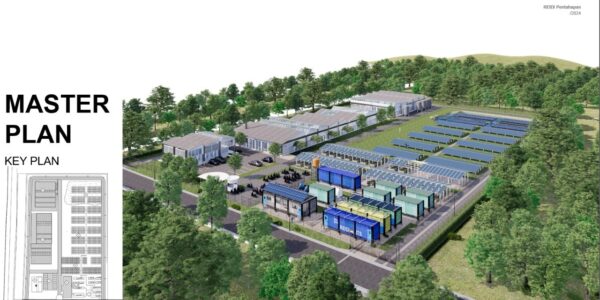
From Research to Real-World Impact: ITS’s Energy Efficiency Services Transforming Local Industries
Providing energy efficiency services to industries is important because it bridges academic research with practical solutions, fostering innovation and sustainability in the industrial sector. Universities are hubs of cutting-edge knowledge, technology, and expertise, and by offering energy efficiency services, they can help industries optimize their operations, reduce energy consumption, and lower greenhouse gas emissions. This collaboration not only enhances the sustainability of businesses but also provides students and researchers with real-world experiences, driving advancements in energy-efficient technologies and practices. Additionally, universities that engage in such services contribute to societal goals of reducing environmental impact while positioning themselves as leaders in addressing global challenges like climate change.
ITS continues to support services for local industries to support energy efficiency and clean energy in the form of assessments, workshops, and research. Starting from working with PT Panasonic Gobel Life Solution Manufacturing and Pasuruan City Government in producing LED lights, to producing the first EVITS electric motorcycle. This activity is carried out by ITS to support the acceleration of the green energy transition in the local industry which of course greatly impacts the community because many of the people use their products.
ITS is working with PT Panasonic Gobel Life Solution Manufacturing which is one of the local industries engaged in electronic manufacturing to answer the needs of the community. The launch of Bangga Buatan Indonesia (BBI) LED Bulb lighting products that are environmentally friendly and energy efficient. The cooperation is also a series to increase the level of domestic components (TKDN) of the electronics industry in Indonesia which is useful for strengthening local industries, reducing dependence on imported products, and supporting regional economic growth. Another advantage is that the lamp can live longer up to 12 thousand hours and with the lamp production capacity increased from the original 50 million pieces per year to 100 million pieces per year, it is expected to be able to meet the needs of light bulbs in Indonesia, and can even be exported.
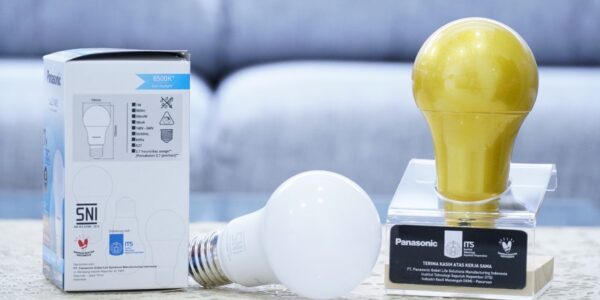
Furthermore, ITS through PT ITS Tekno Sains also collaborated with PT Panggung Electric Citrabuana which is also one of the local industries engaged in electronic manufacturing to inaugurate the first production of Electric Vehicle ITS (EVITS) in the form of motorcycle, a work of innovation that became a commercial product. Researchers who carry out various stages of research, testing, and product refinement that take up to almost a year so that EVITS electric motorbikes can be produced. Due to the very high public interest in electric motorbikes, this product is very well received to support environmental friendliness.
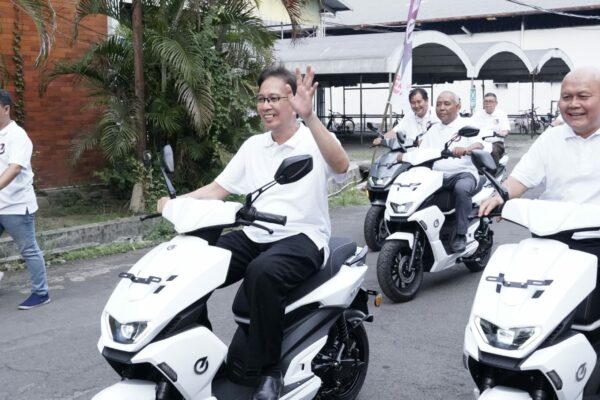
ITS Leads Clean Energy Policy Development to Support Indonesia’s Net-Zero Goals
Policy development for clean energy technology is crucial for driving the global transition to sustainable energy systems and combating climate change. Effective policies create a supportive framework that encourages the adoption, innovation, and scaling of clean energy solutions such as solar, wind, and geothermal power. These policies help remove barriers to investment, promote research and development, and ensure that regulatory standards align with the needs of a low-carbon future. By fostering a stable and predictable environment for clean energy projects, policy development also attracts private sector participation, reduces reliance on fossil fuels, and enhances energy security. Moreover, it helps create green jobs, stimulate economic growth, and ensure equitable access to cleaner energy options for all communities. In the long term, well-designed policies play a vital role in accelerating the shift toward a more sustainable, resilient, and environmentally responsible energy infrastructure. ITS through Rector’s Circular Letter No. 9665/IT2/T/TU.00.08/V/2024 Chapter Energy Efficiency and Conservation explained at points 1 – 10 endeavor to promote policy development for clean energy technology. Here are the points in the regulation:
- Encourage technology utilization to improve energy efficiency.
- Implement energy efficiency programs by choosing and using energy-efficient and eco-friendly electrical equipment.
- Facilitate the transition to renewable energy for campus use.
- Ensure lights are used only in rooms lacking adequate natural light.
- Strategically place lights without compromising illumination function.
- Limit air conditioning use and maximize ventilation.
- Set air conditioners to a moderate 24-25°C.
- Reserve elevator use for essential needs, prioritize during peak hours and turn off elevators after office hours.
- Apply energy efficiency and conservation principles in all new buildings or renovations.
- Encourage a low-carbon lifestyle among the academic community.
Institut Teknologi Sepuluh Nopember (ITS) and Nanyang Technological University (NTU) Singapore intend to construct the Renewable Energy Integration Demonstrator of Indonesia (REIDI), a project under the Institute of Research for Sustainability and Innovation (INSPIRASI) from Indonesia Endowment Fund for Education as a follow-up to ITS’ commitment to renewable energy. For five years, students and academics will work together to build a living lab with renewable energy and conduct other research. ITS has the honor of being Indonesia’s first institute to own REIDI. It is hoped that REIDI can become a role model not only for universities but also for other institutions/ industries in Indonesia. By creating electricity generators using renewable energy, REIDI will showcase advancements. These advancements include the 500 kV solar panels, the 50 kV biomass, and the 10 kV hydrogen.

After successfully producing Electric Vehicle ITS (EVITS) with PT Panggung Electric Citrabuana which is one of the local industries engaged in electronic manufacturing, the Jakarta city government held discussions with ITS to formulate and implement policies to reduce high air pollution, especially carbon dioxide emissions in Jakarta. At the meeting, a policy was produced to implement a Low Carbon Emission Vehicle (LCEV), one of the efforts that needs to be done is to socialize the public about the importance of environmentally friendly energy through organizing seminars, infographics, social media, etc. In addition, ITS is also committed to helping the Jakarta city government not only through socialization but also research so that it can have a significant impact on a better society.
In addition to formulating policies with the Jakarta City Government in implementing the Low Carbon Emission Vehicle (LCEV), ITS through the Center for Public Policy Studies, Business, and Industry (PKKPBI) also discussed with the National Research and Innovation Agency (BRIN) to make policies to achieve Indonesia’s Net-Zero Emission (NZE) target by 2060. In the discussion, ITS formulated several points of input because the policy will have a very good impact on economic growth, employment, the environment, etc. ITS is also committed to assisting the National Research and Innovation Agency (BRIN) not only through policy formulation in the early stages but also until the policy can be issued and implemented in the community. ITS is willing to assist in assessments, workshops, and research because this is closely related to the needs of Indonesian society and the earth in the future.
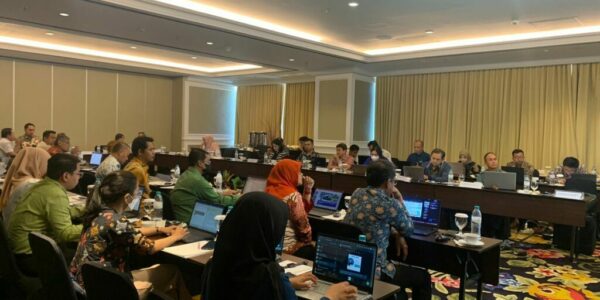
Furthermore, in an effort to support Indonesia’s Net-Zero Emission (NZE) target by 2060, ITS held a seminar, discussion, and suggestion together with the National Electricity Company (PLN) to accelerate the transition to renewable energy because the company is the largest electricity supplier in Indonesia and currently still mostly uses non-renewable energy sources. The discussion resulted in activities to better support NZE through the decarbonization of fossil fuel power plants, increasing renewable energy generation capacity, and providing a good ecosystem for electric vehicles throughout Indonesia. The National Electricity Company is also committed to maximizing the use of renewable energy to support a better Indonesia and the world.
ITS Drives Low-Carbon Innovation with Start-up Support for a Sustainable Future
Providing assistance for start-ups that foster and support a low-carbon economy or technology is essential for accelerating innovation and achieving sustainability goals. Start-ups are often at the forefront of developing cutting-edge solutions, from renewable energy technologies to energy-efficient systems, that can significantly reduce carbon emissions. By offering financial, technical, and regulatory support, governments, universities, and private sectors can help these start-ups overcome barriers to growth, scale their innovations, and bring their products to market. This support not only drives the transition to a low-carbon economy but also stimulates job creation, economic diversification, and competitiveness in emerging green industries. Moreover, encouraging start-ups that focus on low-carbon technologies helps build a culture of sustainability, ensuring that new business models and technological advancements are aligned with climate goals. In the long term, fostering such innovation is key to reducing environmental impact, enhancing resilience, and promoting a healthier planet for future generations. ITS through Rector’s Circular Letter No. 9665/IT2/T/TU.00.08/V/2024 Chapter Energy Efficiency and Conservation explained at point 1 endeavor to use technology for energy efficiency. Here is the point in the regulation:
- Encourage technology utilization to improve energy efficiency.
- Implement energy efficiency programs by choosing and using energy-efficient and eco-friendly electrical equipment.
- Facilitate the transition to renewable energy for campus use.
- Ensure lights are used only in rooms lacking adequate natural light.
- Strategically place lights without compromising illumination function.
- Limit air conditioning use and maximize ventilation.
- Set air conditioners to a moderate 24-25°C.
- Reserve elevator use for essential needs, prioritize during peak hours and turn off elevators after office hours.
- Apply energy efficiency and conservation principles in all new buildings or renovations.
- Encourage a low-carbon lifestyle among the academic community.
ITS through the Directorate of Innovation and Science Technology Area (DIKST) creates a program to foster and create startups in the university environment through funding, mentorship, and monitoring so that the startup can run by itself which can later be useful to support sustainability. One startup that has successfully created products that support low-carbon technology is Truu Mobility, which has created an electric scooter and electric velomobile. Both products use electricity as the main fuel which is certainly environmentally friendly, besides that there are several advanced technologies used in these products such as the IoT locking system to prevent loss if they are out of reach.
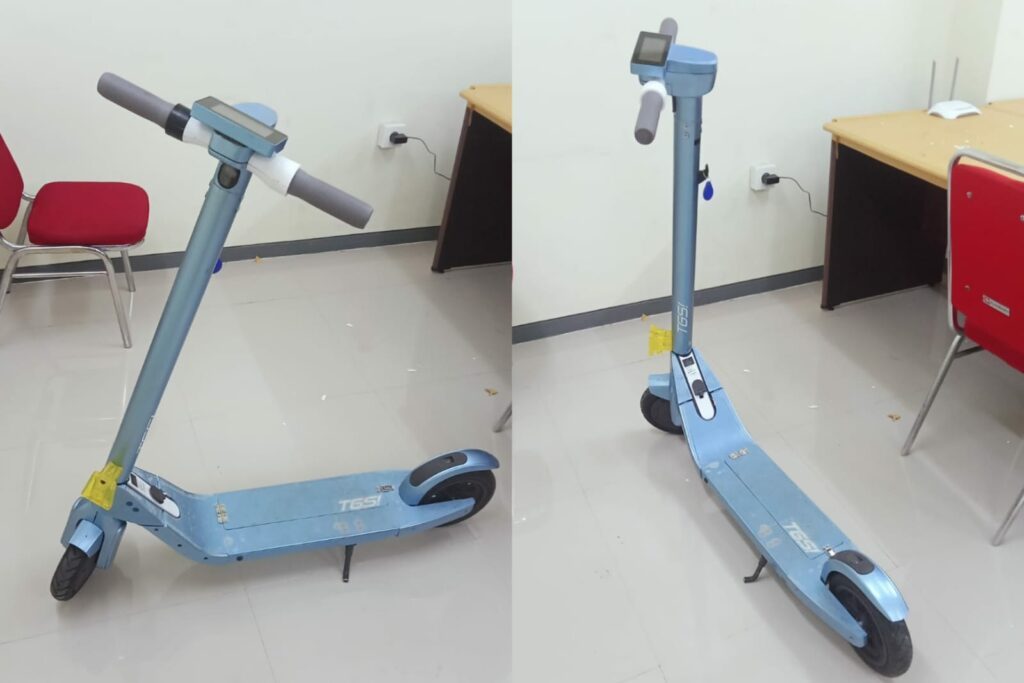
In addition, ITS also provides funding and mentorship to RENUS Smart Power Wall which is a startup engaged in solar panel-based renewable energy services for residential, commercial and industrial. RENUS is present because of the high interest of the Indonesian people in renewable energy, especially solar power plants, but do not know how to use it. Until now the startup has received clients from various backgrounds for the installation of solar panels, charging stations, powerwalls, etc. It is hoped that this startup can grow and meet the needs of a large market in Indonesia.
